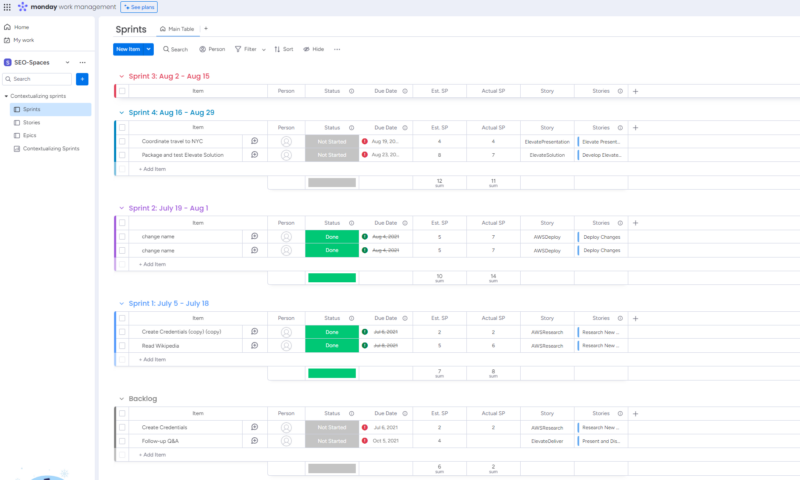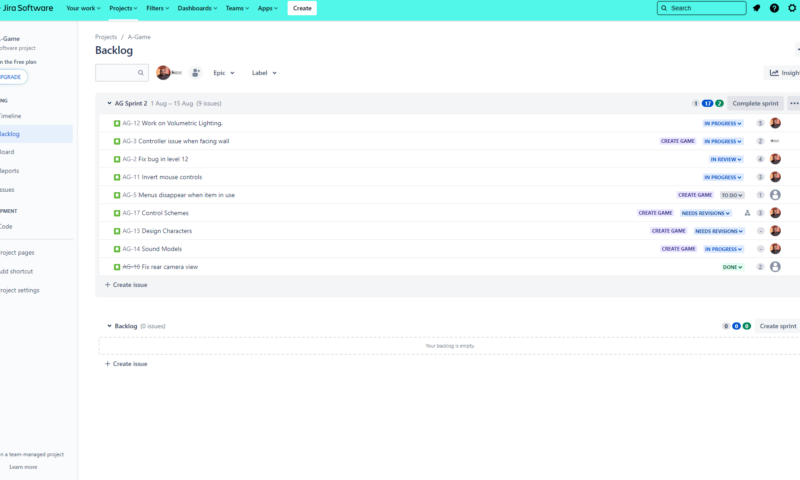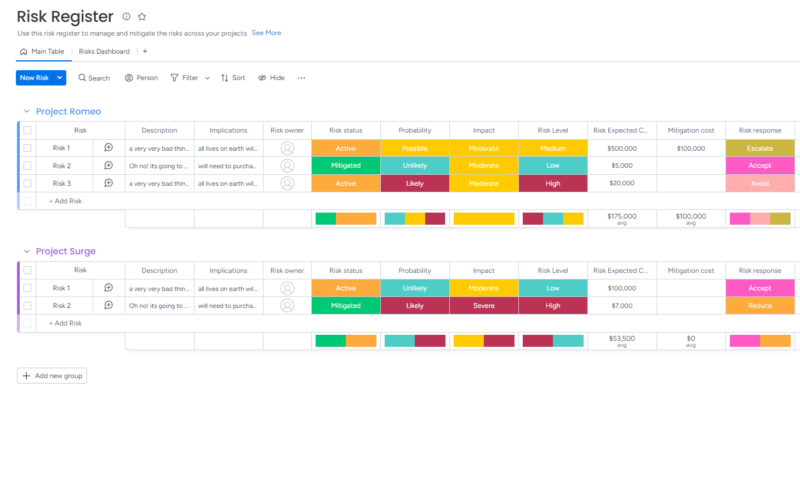Project managers spend a lot of time planning projects and often utilize the best project management software for help. Still, even the most well-planned projects can go south if you fail to account for risks and uncertain events. However, if you plan for risks and external events using event chain methodology, you can significantly reduce the risk of project failure.
If you’re unfamiliar with event chain methodology, stick around. Below, we’ll explain what it is and how it can help you create better project schedules by factoring in risks and external events. We’ll also cover the six principles of the method and go over an example to illustrate how valuable this technique can be. Let’s dive in.
Meaning: What Is Event Chain Methodology (ECM)?
Event chain methodology (ECM) is a scheduling concept that a project manager can use to evaluate risks and events, their interrelationships (chain of events) and their impact on a project. The method can also help teams determine the chances of critical events occurring by using a mathematical technique called Monte Carlo simulation (we’ll cover this later).

Once a project schedule has been created and potential risks and events have been identified, project leaders can mitigate the negative effects that uncertain events can have on the project. ECM can be used alongside Agile frameworks and traditional project management methodologies like Waterfall.
It’s important to note that ECM is not a complete project management methodology and should not be confused with the Critical Path Method or Critical Chain Project Management. It is just an uncertainty model that can be used with these and other methods and frameworks, like Scrum and Kanban, to paint a better picture of risks and likely outcomes.
Event Chain Examples
Now that we’ve introduced the event chain method, it’s time to examine how it works. The idea is for the manager to plot out a chain of events that could occur during a project’s life cycle. This includes plotting all expected tasks and milestones. Once the expected events have been accounted for, it’s time to plot variables or risks and issues that could impact the project.

Let’s think about a software development project. You planned the project and have refined the backlog. You start the project, but then the client drops a bombshell — they want to add a complex feature that wasn’t on your radar. Now, you must recalculate the project duration, adjust budgets and determine whether you have the right resources.
The event chain method, which is a schedule network analysis technique, can help you plan for unforeseen events like this. For example, during planning, you may have added a buffer to the budget and the finish date to account for extra work, or you may have predicted a need for more resources and can bring in an expert developer to help create complex features.
Though event chain methodology is not a substitute for a full risk mitigation plan, it can certainly help project leaders create project schedules, visualize multiple events (both expected and unexpected) and create event chains that can help teams generate robust risk management plans.
How Is Event Chain Methodology Useful for Project Schedules?
The event chain concept can help a project manager create a detailed schedule full of tasks, milestones and potential issues that could derail a project. Additionally, the method has several other benefits, including:
- Reduced scheduling biases: Event chain methodology can help alleviate biases by steering senior managers to make scheduling decisions based on statistical distributions and data. Schedules and resource allocation plans made without quantitative data can lead management to create unrealistic schedules.
- Simplified risk management and analysis: Using ECM can make project risk analysis easier, as it allows teams to visualize potential issues using task management tools like Gantt charts. If your current software doesn’t support Gantt charts, you should check out our roundup of the best Gantt chart software.
- Increased accuracy: Identifying critical chains while creating a project schedule allows project teams to see how possible events and risks can affect individual tasks and the entire project. Quantitative analysis allows entire project teams to make more informed decisions and use better processes to help them mitigate potential risks.

certainly help uncover potential unexpected events.
Key Principles of Event Chain Methodology
Like many other methodologies, ECM is based on key principles. Below, we’ll examine six principles that project managers should consider when using ECM.
Final Thoughts
No project is perfect, and unexpected events can cause disruptions. Still, with proper planning during the project scheduling phase, the event chain method can help you plan for critical chains of events. Though ECM should not be used as a replacement for a risk mitigation plan, it can help you schedule project tasks and plan for risks and issues.
What’s your experience with planning for events and critical chains? Do you feel traditional Monte Carlo simulations help with identifying critical events? Do you use Gantt charts or other diagrams to help you visualize multiple events? Let us know in the comments. Thanks for reading.
FAQ: Event Chain Methodology
-
The pros of event chain methodology include being able to identify external threats and events before a project begins and scheduling tasks without bias. The biggest con of ECM is that managers can often forget to see risks as potential opportunities while managing events.
-
The theory behind the chain of events is that no project, including its associated tasks, is immune to an external event. Therefore, project leaders should plan for potential risks ahead of time to efficiently deal with issues and risks if and when they arise.
-
Chain methodology is the process of examining potentially impactful relationships between tasks, risks and external factors.
{“@context”:”https:\/\/schema.org”,”@type”:”FAQPage”,”mainEntity”:[{“@type”:”Question”,”name”:”What Are the Pros & Cons of Event Chain Methodology?”,”acceptedAnswer”:{“@type”:”Answer”,”text”:”
The pros of event chain methodology include being able to identify external threats and events before a project begins and scheduling tasks without bias. The biggest con of ECM is that managers can often forget to see risks as potential opportunities while managing events.\n”}},{“@type”:”Question”,”name”:”What Is the Theory of the Chain of Events?”,”acceptedAnswer”:{“@type”:”Answer”,”text”:”
The theory behind the chain of events is that no project, including its associated tasks, is immune to an external event. Therefore, project leaders should plan for potential risks ahead of time to efficiently deal with issues and risks if and when they arise.\n”}},{“@type”:”Question”,”name”:”What Is the Meaning of Chain Methodology? “,”acceptedAnswer”:{“@type”:”Answer”,”text”:”
Chain methodology is the process of examining potentially impactful relationships between tasks, risks and external factors.\n”}}]}
Sources:
The post What Is Event Chain Methodology in Project Management? Meaning & Principles Explained in 2024 appeared first on Cloudwards.


